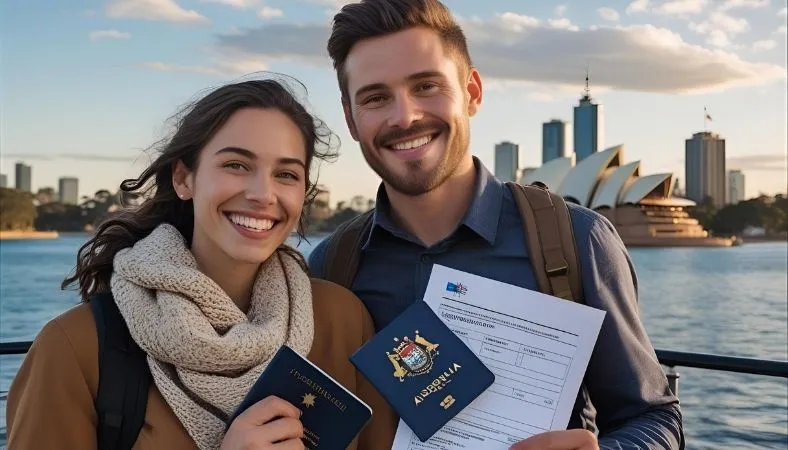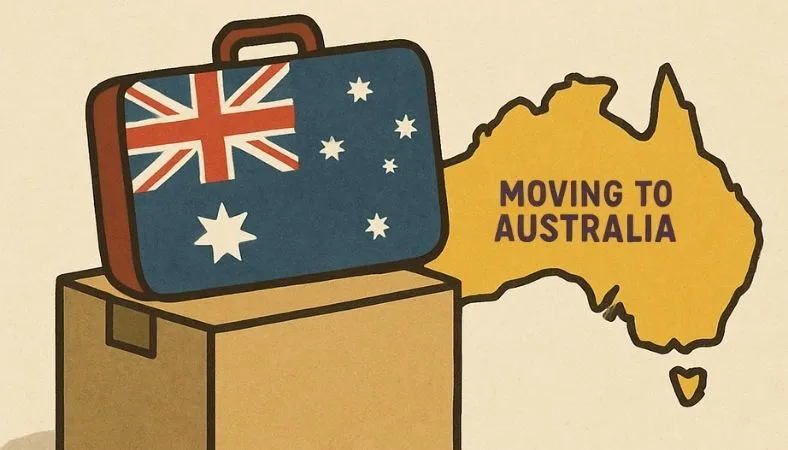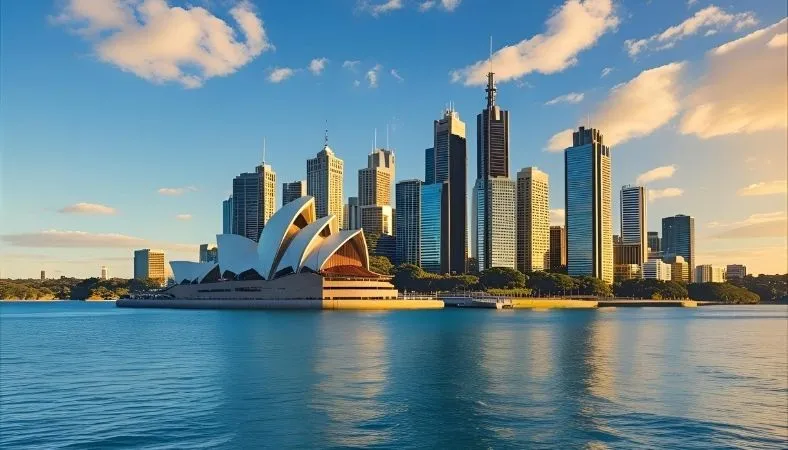Join Sarah and Tom as they navigate the Subclass 820 visa in Australia. Learn eligibility, steps, evidence, and tips to build a strong application with confidence.
Key Takeaways
- The Subclass 820 visa lets you stay with your partner in Australia while chasing permanent residency.
- You’ve gotta prove your relationship is real with evidence of shared money, home, social life, and commitment.
- Expect a 12–26 month wait; nearly half of applications (42% in 2018) get rejected if the evidence is weak.
- A bridging visa keeps you legal, letting you work, study, and access healthcare during the process.
- A migration agent can make your application shine, saving you stress and boosting approval odds.
Starting Your Australian Dream
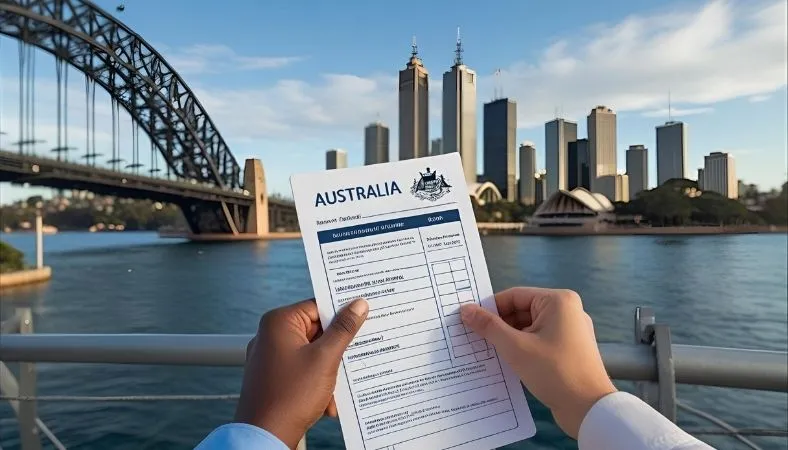 You’ve packed your bags, said goodbye to your old life, and landed in Australia to be with the person you love. Now, the Subclass 820 Partner Visa in Australia is the key to turning that dream into reality, a legal way to stay, work, and build a future together while waiting for the permanent Subclass 801 visa. Take Sarah and Tom, a couple who swapped London’s grey skies for Sydney’s sunshine.
You’ve packed your bags, said goodbye to your old life, and landed in Australia to be with the person you love. Now, the Subclass 820 Partner Visa in Australia is the key to turning that dream into reality, a legal way to stay, work, and build a future together while waiting for the permanent Subclass 801 visa. Take Sarah and Tom, a couple who swapped London’s grey skies for Sydney’s sunshine.
They faced piles of paperwork, anxious waits, and the stress of proving their love to the government. Their story, sprinkled through this guide, shows how the 820 visa can be your bridge to a new chapter. This visa is for spouses or de facto partners (yep, same-sex couples too) of Australian citizens, permanent residents, or eligible New Zealand citizens. It’s for folks already in Australia, unlike the offshore 309/100 visas, and comes with perks like Medicare and work rights.
Who Can Get the 820 Visa?
Picture Sarah and Tom, together for two years but separated for months by visa rules. To qualify for the 820 visa in Australia, you need a genuine relationship, married or de facto, with an Australian citizen, permanent resident, or eligible New Zealand citizen.
De facto means you’ve lived together for at least 12 months, or you can show you’re committed even if life’s kept you apart. Your sponsor can’t have a serious criminal record, and you’ve gotta be over 18, passing health and character checks. Got a tricky situation, like being in Australia unlawfully or on a tourist visa? A Schedule 3 waiver might save the day, but you’ll need a strong case, such as children or compelling personal reasons.
This visa is suitable for various types of relationships, including newlyweds, long-distance lovers, and couples like Sarah and Tom, who used Skype logs to prove their bond.
How to Apply for the 820 Visa
Tackling the 820 visa in Australia is like piecing together a puzzle of your life with your partner. The process kicks off online in ImmiAccount, the government’s visa portal, where you’ll lodge one application covering both the temporary 820 and permanent 801 visas. After wrestling with the forms, you’ll pay a hefty fee, thousands of dollars, and upload a mountain of documents. Then, it’s a waiting game.
The good news? Once you’ve applied, you’ll usually get a Bridging Visa A (BVA) almost automatically, letting you stay, work, and study legally. Planning a trip abroad? You’ll need a Bridging Visa B (BVB) first. Processing can drag on for 12–26 months for the 820 and another 11–30 months for the 801, per the Department of Home Affairs (2025). Sarah and Tom got lucky, nailing their 820 visa in just 3.5 months in 2024 by working with a migration agent who caught every detail. Want to follow their lead? Start with these steps:
- Set up an ImmiAccount and fill out the forms with care.
- Gather every document you’ll need (more on that next).
- Double-check for errors before hitting submit to avoid delays.
- Apply for a BVB if you’re eager to travel while waiting.
Now that you’ve got the basics, let’s talk about the heart of your application: proving your relationship.
Proving Your Relationship Is Real
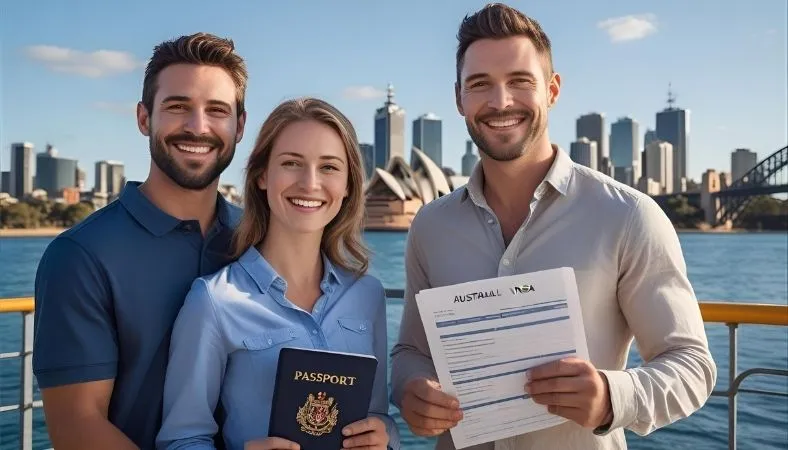 This is the part where most people panic. Don’t. The government isn’t interrogating you; they just need a clear, vivid picture of your life together, built on what they call the “four pillars”: financial, household, social, and commitment. Weak evidence is a dealbreaker—42% of 820 visa applications were rejected in 2018 because of it. Sarah and Tom hit a snag here since they didn’t share a lease, but they got creative with joint gym memberships and travel receipts. For each pillar, aim for 10–15 solid documents, but quality beats quantity. Flooding them with 100 similar photos won’t help. Here’s what works:
This is the part where most people panic. Don’t. The government isn’t interrogating you; they just need a clear, vivid picture of your life together, built on what they call the “four pillars”: financial, household, social, and commitment. Weak evidence is a dealbreaker—42% of 820 visa applications were rejected in 2018 because of it. Sarah and Tom hit a snag here since they didn’t share a lease, but they got creative with joint gym memberships and travel receipts. For each pillar, aim for 10–15 solid documents, but quality beats quantity. Flooding them with 100 similar photos won’t help. Here’s what works:
Financial: Joint bank accounts, shared bills, or a car loan in both names. Even a shared coffee subscription counts.
Household: A lease, utility bills, or a note about who does the laundry. Sarah and Tom included grocery receipts.
Social: Photos from family BBQs, plane tickets, or Instagram posts tagging each other. Letters from friends help too.
Commitment: Ask mates to write statutory declarations (Form 888). Emails about your dream home add weight.
Haven’t lived together? Use call logs or gift receipts. If your documents aren’t in English, get them officially translated—skipping this is a surefire way to hit delays. This step is your chance to show your love is the real deal, so make it count.
What It’ll Cost You
Let’s be blunt: the 820 visa in Australia is expensive. The application fee alone can hit around $8,850 (check the Department’s site for the latest figure), and that’s just the start. Add health checks, police clearances, and translations for non-English documents, and you’re looking at $10,000 or more. If you hire a migration agent, like Sarah and Tom did, tack on a few thousand extra. Work rights might take weeks to kick in on a BVA, so Sarah leaned on Tom’s income to get by. To avoid getting caught out:
- Save extra cash before applying to cover living costs.
- See if you qualify for Centrelink to ease the pinch.
- Shop around for migration agent quotes to keep costs down.
These expenses are a significant hurdle, but they represent an investment in your shared future. Planning ahead keeps the stress manageable.
Navigating the Tough Bits
The 820 visa process can feel like building a house on shaky ground—long waits, tricky rules, and the fear of rejection. Waiting 12–26 months for a decision tests your patience, and that 42% refusal rate from 2018 looms large. Complex situations, such as Sarah and Tom’s long-distance stints or cases involving children or individuals with unlawful status, require extra effort. If your relationship ends, you must tell the government, but you might still qualify for the 801 visa in cases like shared custody. Here’s how to clear these hurdles:
- For long waits, submit a bulletproof application upfront. Agents spot gaps you might miss.
- To avoid refusals, ensure your evidence covers all four pillars. Extra Form 888s from friends help.
- For Schedule 3 waivers, write a heartfelt letter explaining your case. A lawyer’s advice is gold.
- If your relationship breaks down, report it fast. You may have options, like applying under special grounds.
Sarah and Tom dodged rejection by having their agent triple-check their application. A little extra effort here can save you a world of worry.
Why the 820 Visa Is Worth It
The 820 visa in Australia opens the door to a stable life. You can work full-time, study, and tap into Medicare for healthcare. Sarah used Centrelink to cover costs while studying, which gave them breathing room. Unlike the offshore 309 visa, the 820 lets you stay with your partner during processing. After about two years, you’re eligible for the 801 visa, locking in permanent residency. For Sarah and Tom, this meant planning a wedding and starting a small business without fear of being sent back. This visa isn’t just paperwork—it’s the foundation for your life together.
What If Your Visa Gets Refused?
Nobody wants to think about rejection, but it happens. Weak evidence or sponsor issues are common culprits. If your 820 visa in Australia is refused, you’ve got 28 days to appeal through the Administrative Appeals Tribunal (AAT). A couple, Sarah and Tom, read about on an immigration forum won their appeal by adding new photos and Form 888s. If you face this:
- Reach out to a migration lawyer ASAP for expert guidance.
- File your AAT appeal within 28 days—no exceptions.
- Bolster your case with fresh evidence addressing the refusal.
- Stay patient; appeals can take months, but they can turn things around.
Preparation is your best defence, but an appeal is a second shot at your dream.
Frequently Asked Questions
What is the Subclass 820 visa?
It’s a temporary partner visa for spouses or de facto partners of Australian citizens or residents. You can live, work, and study in Australia while waiting for the permanent 801 visa, typically after two years of proving your relationship’s authenticity.
How long does the 820 visa take?
Expect 12–26 months, depending on your application’s strength and background. A rock-solid application, like Sarah and Tom’s, can speed things up—some see approvals in just 3.5 months with expert help.
What evidence is needed for an 820 visa?
Show shared finances (e.g., joint accounts), household (e.g., lease), social ties (e.g., photos), and commitment (e.g., Form 888). Aim for 10–15 strong documents per pillar to avoid the 42% refusal rate.
Can I work on an 820 visa?
Yep, a Bridging Visa A (BVA) gives you full work and study rights during processing. You’ll also get Medicare and some Centrelink benefits, helping you settle in while you wait.
What happens if my 820 visa is refused?
Appeal through the Administrative Appeals Tribunal within 28 days. Add new evidence, such as photos or Form 888s, and consider consulting a migration lawyer for assistance. Appeals take time but can succeed, as many have found.
How much does the 820 visa cost?
The fees’s around $8,850, plus health checks, clearances, and translations—think $10,000+. Migration agents add more. Budget early, as work rights may lag, impacting your finances during the wait.
Your Next Move
You’re ready to tackle the Subclass 820 visa in Australia. Start digging up those bank statements, photos, and friend declarations—they’re the bricks of your new life. Like Sarah and Tom, consider a migration agent to make your application bulletproof. Your Australian dream is closer than you think—get started today!

